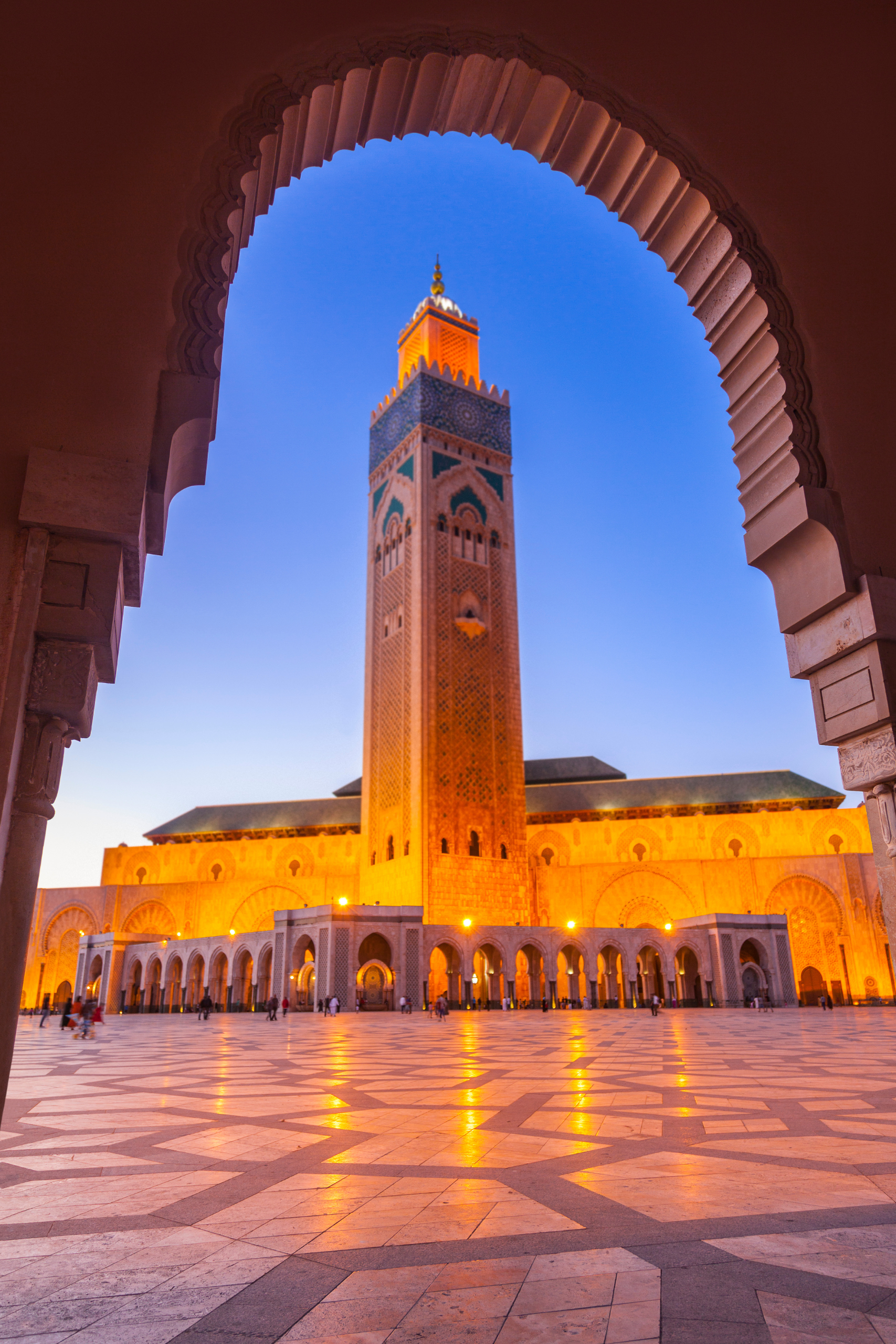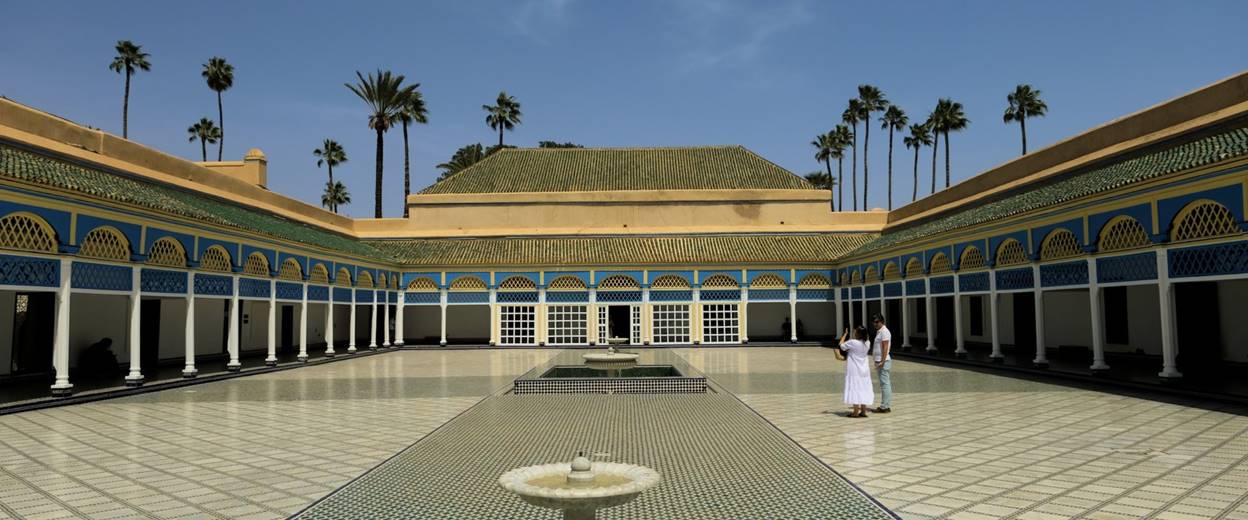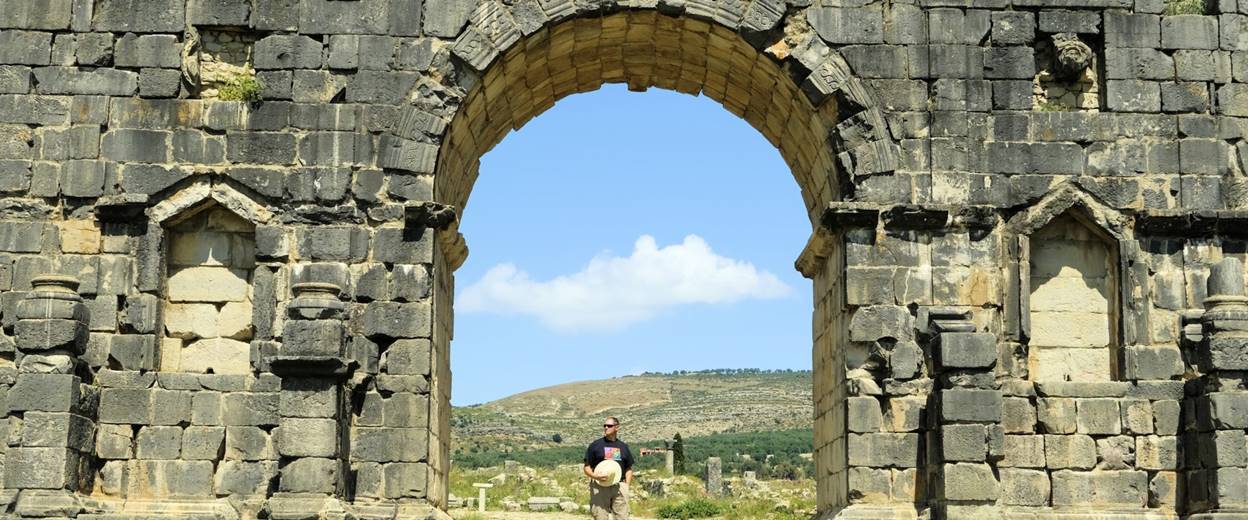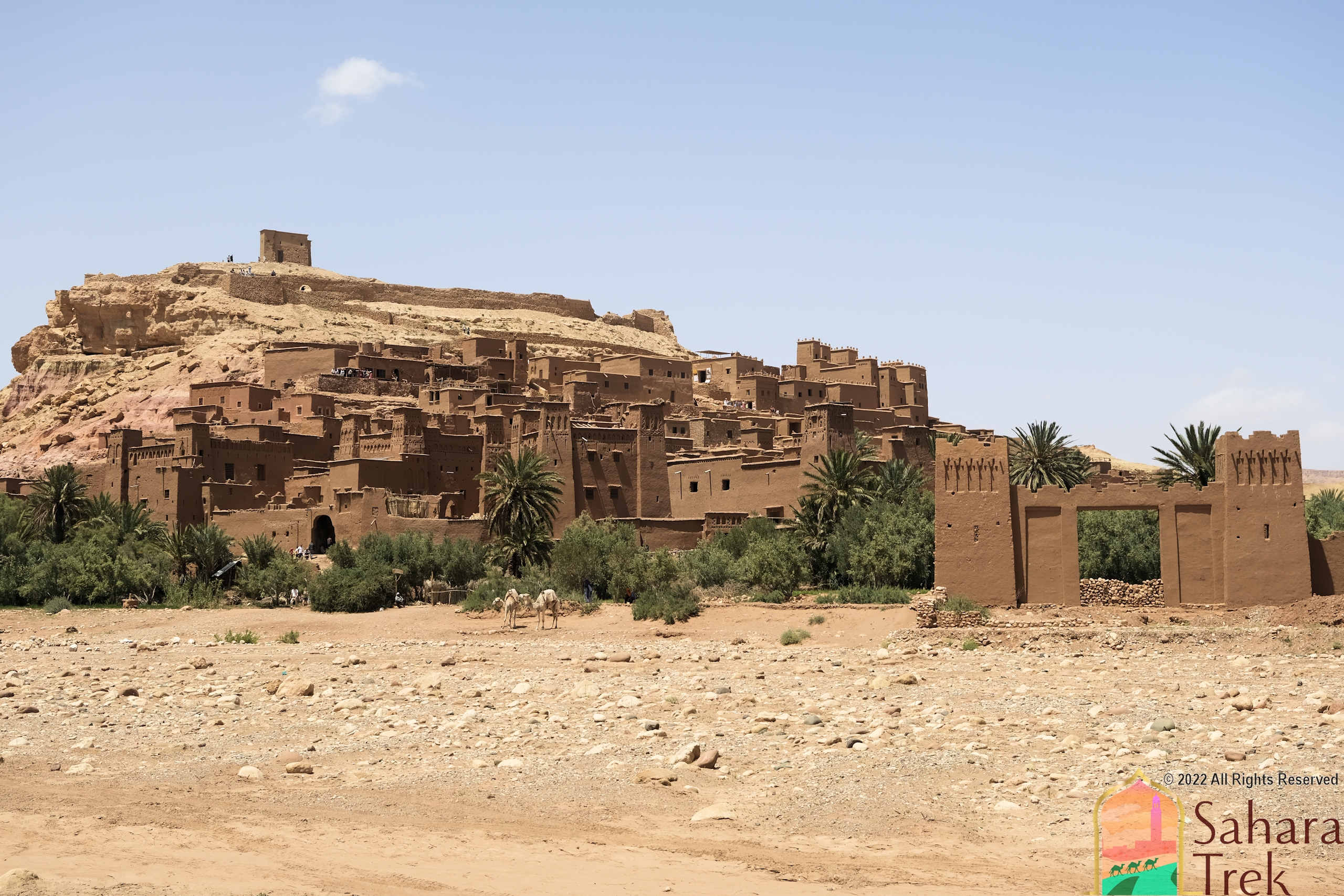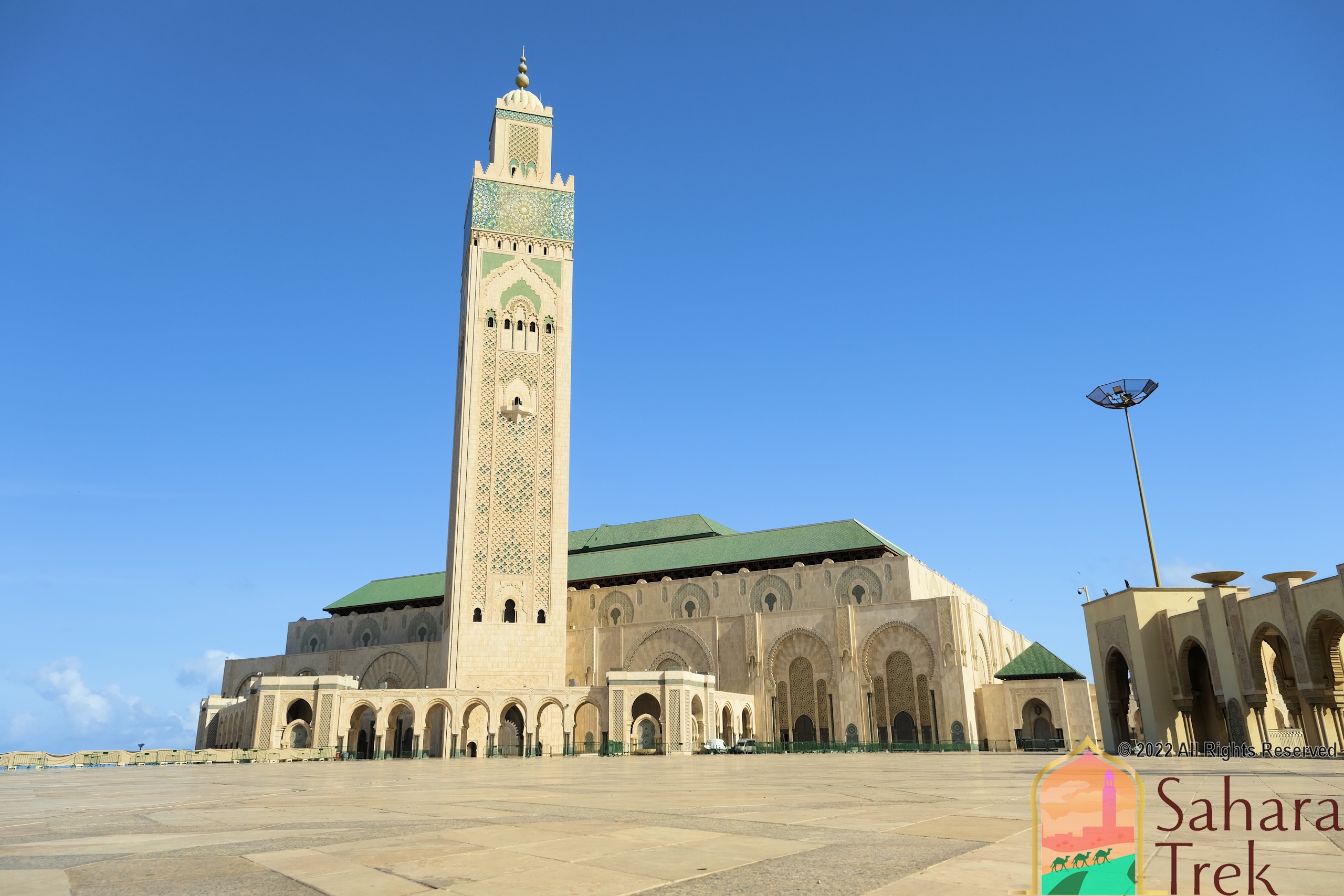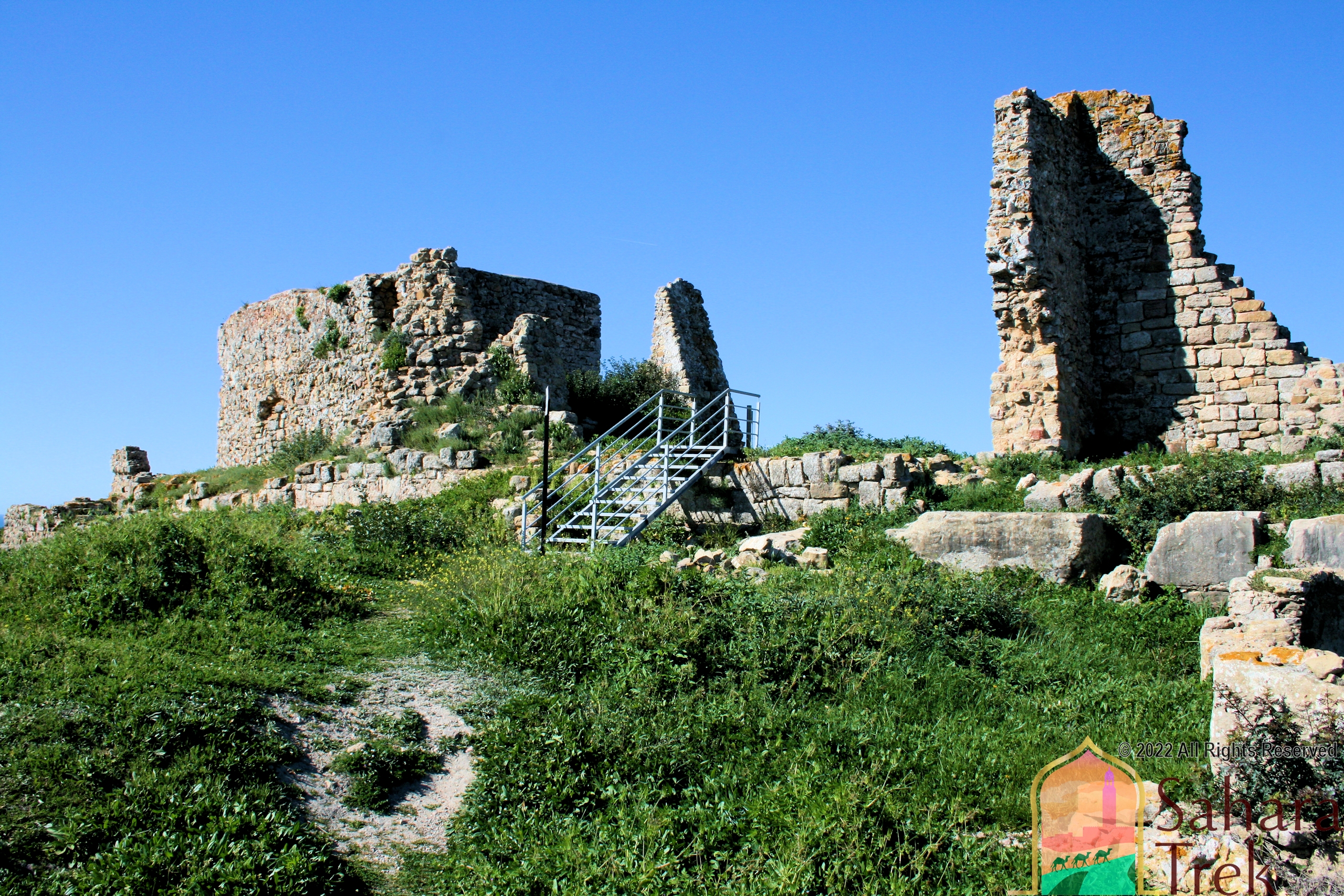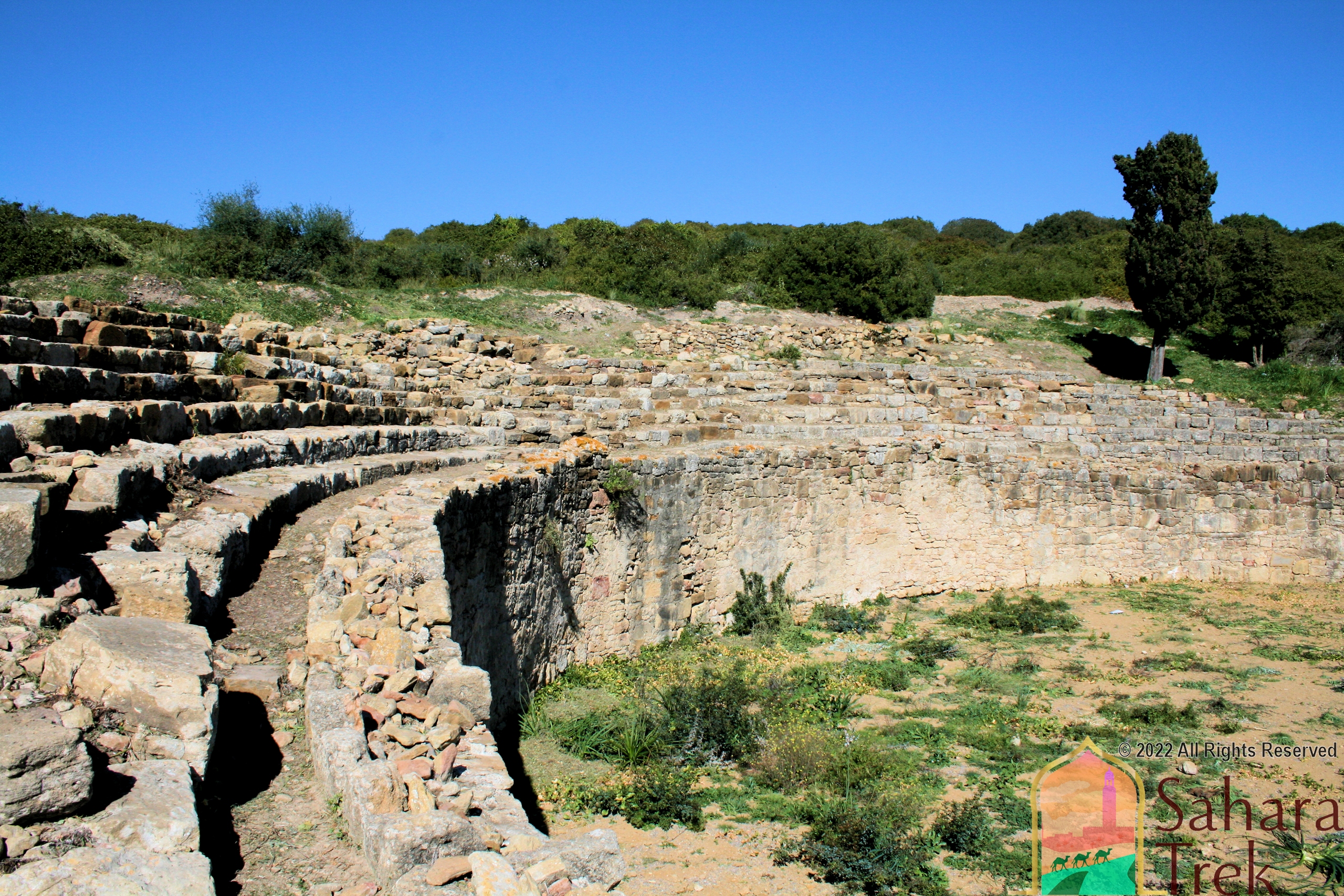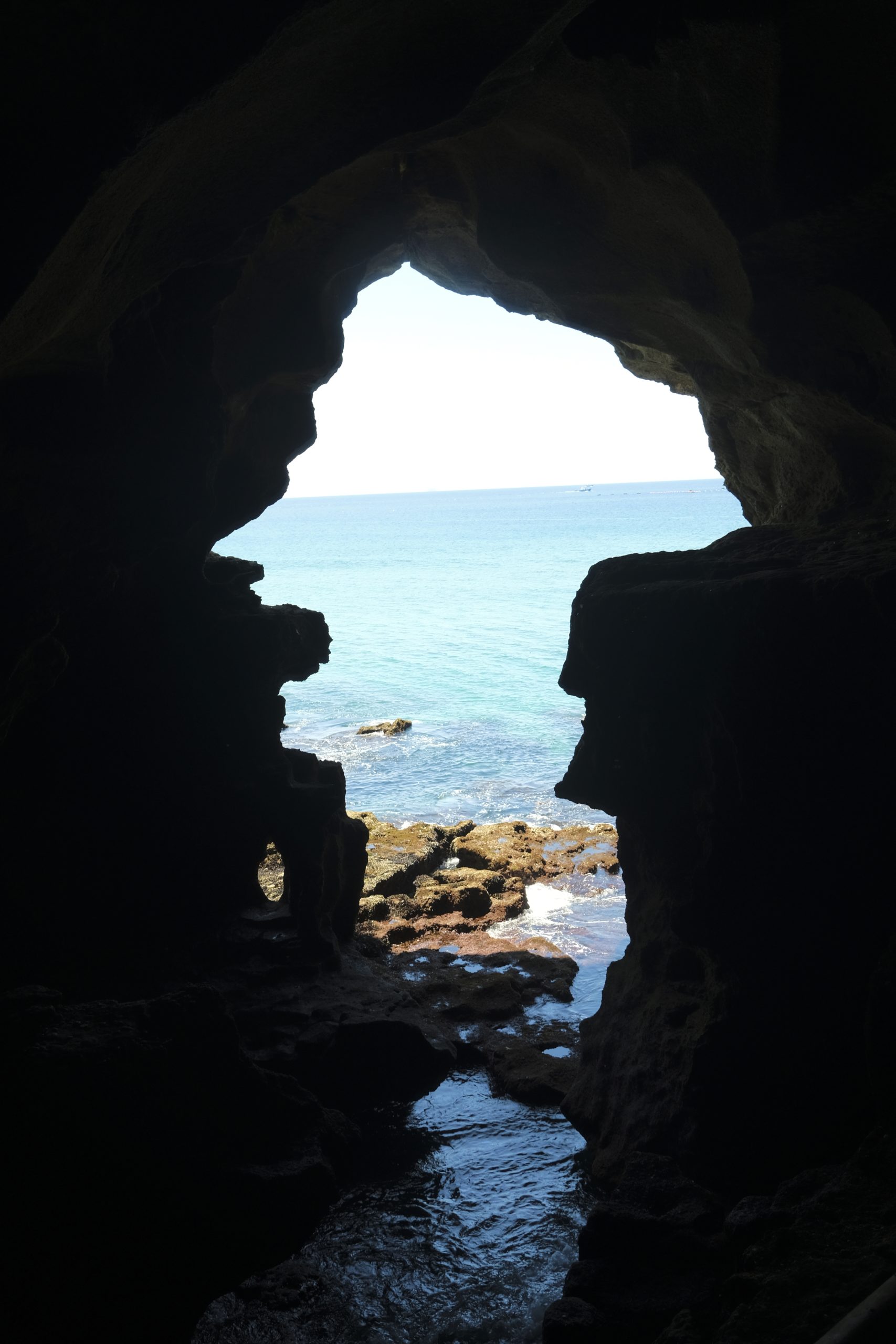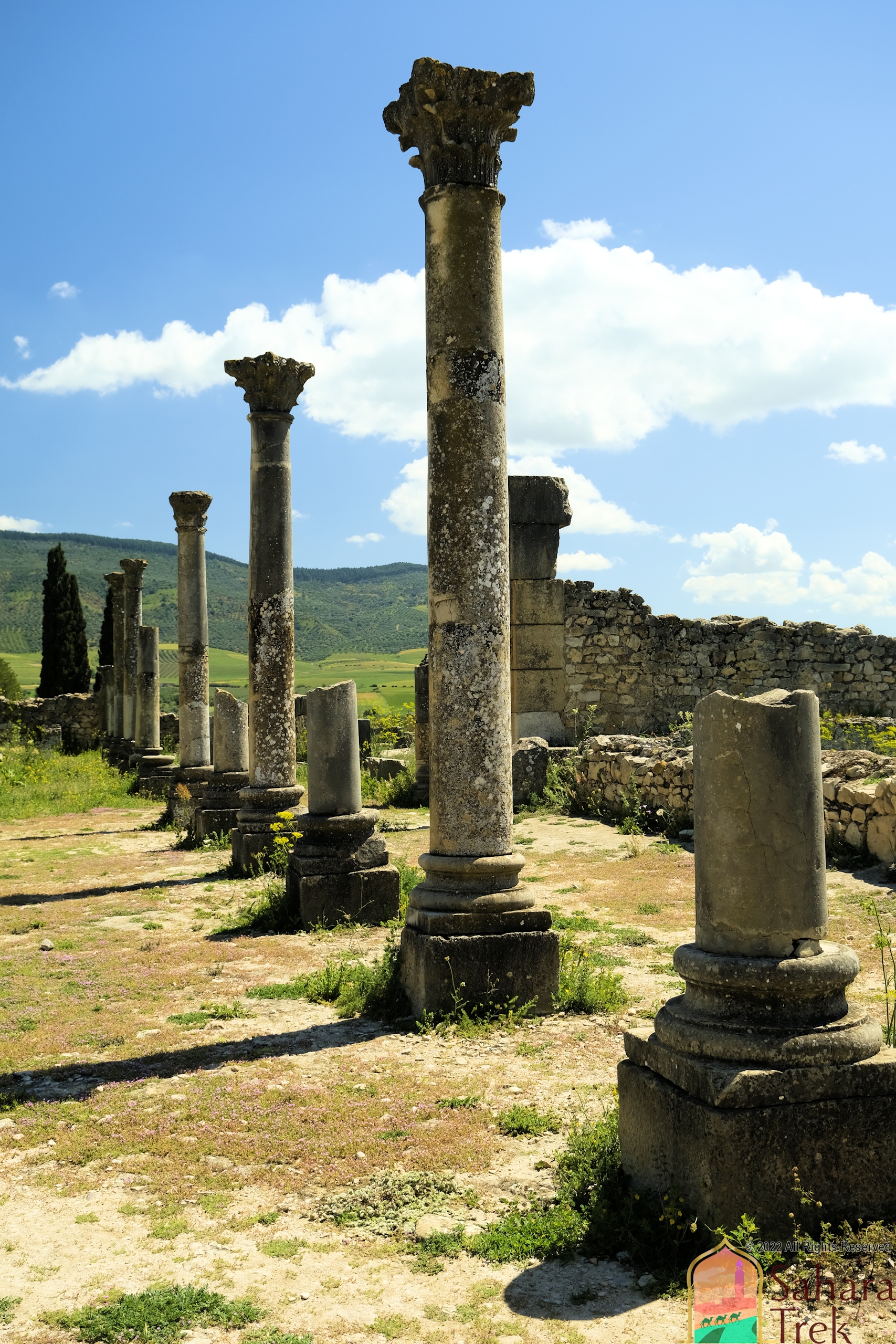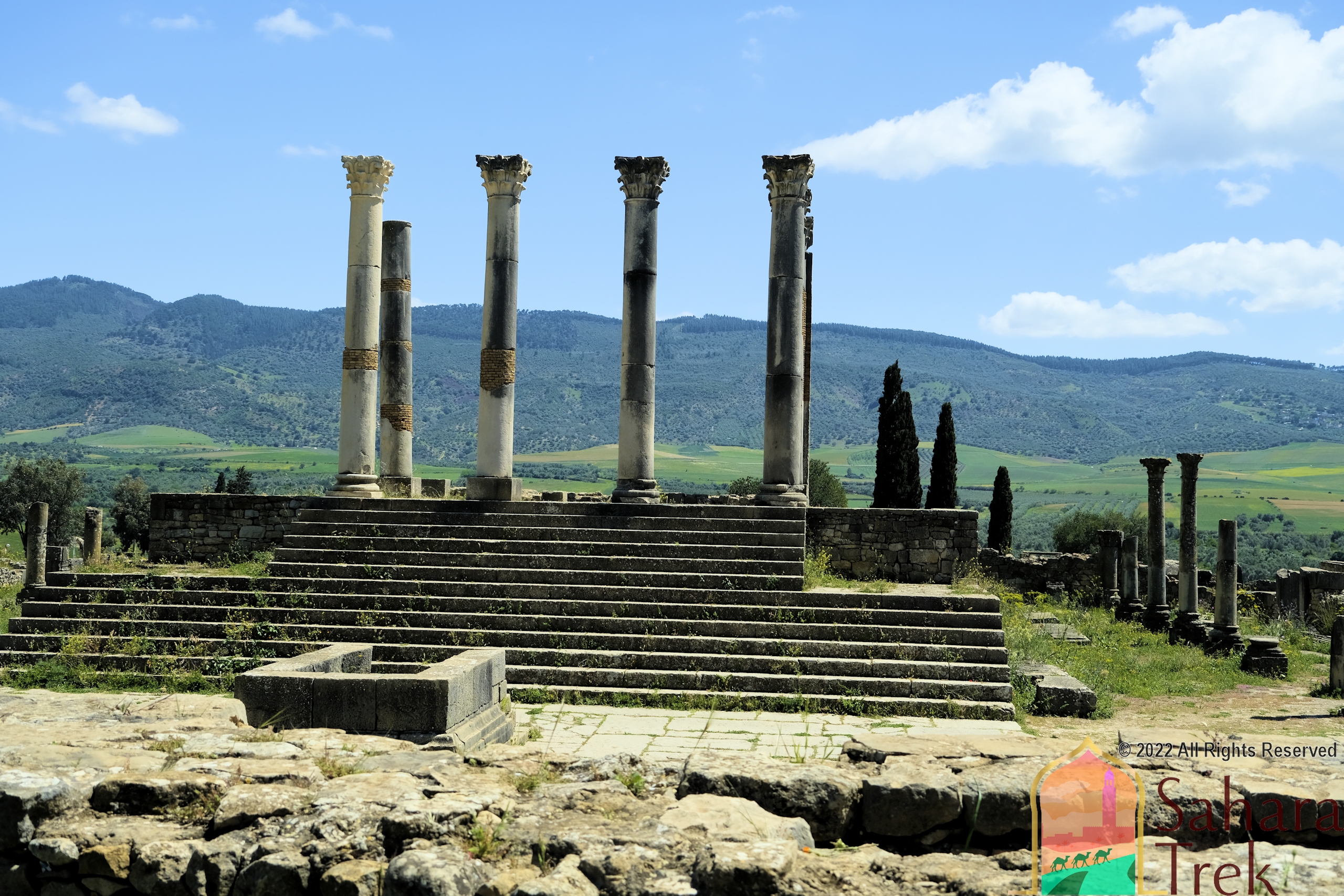Tangier

Tracing the Fascinating History and Present-Day Wonders
Discover the enchanting city of Tangier, where ancient tales converge with modern vibrancy. Tangier is a city shaped by various civilizations throughout the ages and explores the remarkable attractions that await visitors today.
Ancient Origins
Tangier’s history dates back thousands of years, with evidence of Phoenician settlement as early as the 10th century BC. The city flourished under various rulers, including the Carthaginians, Romans, Vandals, and Byzantines, each leaving their imprint on its cultural landscape.
Strategic Location and Cultural Crossroads
Situated at the crossroads of Africa, Europe, and the Mediterranean, Tangier became a melting pot of cultures, attracting waves of conquerors and traders. Its strategic location made it a coveted prize for empires such as the Arabs, Portuguese, and Spanish, who vied for control over this vital port city.
International Zone Era
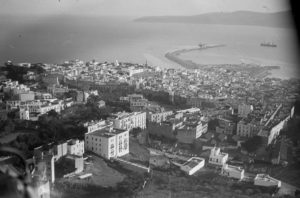 In the early 20th century, Tangier entered a unique phase as an international zone governed by several countries. During this period, the city became a haven for artists, writers, and spies, earning a reputation as a bohemian enclave that attracted luminaries such as Paul Bowles, William S. Burroughs, and Tennessee Williams.
In the early 20th century, Tangier entered a unique phase as an international zone governed by several countries. During this period, the city became a haven for artists, writers, and spies, earning a reputation as a bohemian enclave that attracted luminaries such as Paul Bowles, William S. Burroughs, and Tennessee Williams.
Tangier’s Highlights Today
Modern Tangier blends its rich history with contemporary allure, offering an array of captivating attractions for visitors to explore:
The Medina
Step into Tangier’s ancient heart, where narrow alleyways, bustling souks, and ornate mosques immerse you in a sensory feast. Lose yourself in the vibrant tapestry of sights, sounds, and scents.
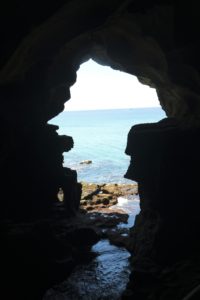 Caves of Hercules
Caves of Hercules
Just outside the city, marvel at the natural wonders of the Caves of Hercules. These mysterious caves, believed to be linked to Greek mythology, offer breathtaking views of the Atlantic Ocean.
Kasbah Museum
Discover the city’s history at the Kasbah Museum, housed within the former Sultan’s palace. Explore its impressive collection of artifacts, including ceramics, textiles, and traditional Moroccan art.
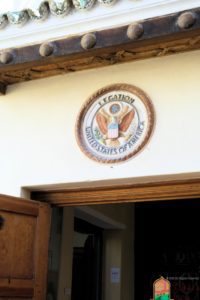
American Legation Museum
Delve into Tangier’s diplomatic history at the American Legation Museum, the first American public property outside the United States. Discover its extensive collection of art, historical documents, and exhibits showcasing the city’s international heritage.
The Corniche
Stroll along Tangier’s picturesque Corniche, a palm-lined promenade that offers panoramic views of the city’s coastline. Enjoy the vibrant atmosphere, indulge in delicious seafood, or simply relax while soaking in the Mediterranean ambiance.
Tangier’s Contemporary Vibe
Tangier’s cosmopolitan spirit is alive and well, with modern developments complementing its historical charm. The city boasts a thriving art scene, trendy cafés, and a burgeoning nightlife, providing visitors with a delightful blend of old and new.
Tangier’s allure lies not only in its storied past but also in the vibrant tapestry of its present-day wonders. From its ancient Medina and historic museums to its modern artistic flair and scenic Corniche, Tangier invites visitors to immerse themselves in a captivating journey through time and culture. Prepare to be enchanted by the timeless beauty and dynamic spirit of this captivating Moroccan city.
Camel Caravan

Meet Your New Best Friend: The Ship of the Desert
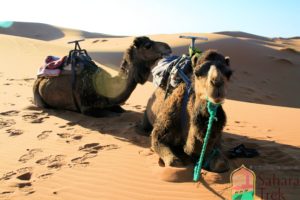
Imagine standing before a majestic creature that will forever change your perception of desert travel. At over six feet tall and weighing nearly two-thirds of a ton, these gentle giants of the dunes aren’t just transportation – they’re your ticket to an unforgettable adventure.
More Than Just a Ride
Think of them as the desert’s answer to your favorite family dog – if that dog wore a saddle and could carry you across golden sands with the grace of a seasoned dancer. These incredible creatures possess an intelligence that might surprise you, forming bonds with humans through simple acts of kindness. And here’s a secret: they’re natural models, ready to pose for that perfect holiday snap with an almost knowing look in their eyes.
The World’s Most Comfortable Living Room
 Forget everything you know about horseback riding. Mounting your desert companion feels like settling into your favorite oversized armchair – if that armchair had been draped in the finest felt and placed atop nature’s most sophisticated suspension system. Unlike a horse’s bouncing trot, your camel’s walk is a gentle, mesmerizing sway that seems to match the rhythm of the desert itself.
Forget everything you know about horseback riding. Mounting your desert companion feels like settling into your favorite oversized armchair – if that armchair had been draped in the finest felt and placed atop nature’s most sophisticated suspension system. Unlike a horse’s bouncing trot, your camel’s walk is a gentle, mesmerizing sway that seems to match the rhythm of the desert itself.
No Experience? No Problem!
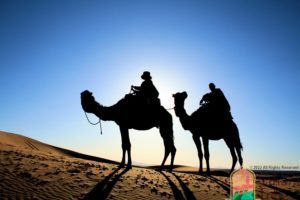 Leave your worries about navigation behind. These magnificent creatures are born followers, happily padding along behind their experienced guides. You won’t find yourself fumbling with reins or wondering which way to turn. Your only job? Sit back, relax, and soak in the adventure.
Leave your worries about navigation behind. These magnificent creatures are born followers, happily padding along behind their experienced guides. You won’t find yourself fumbling with reins or wondering which way to turn. Your only job? Sit back, relax, and soak in the adventure.
The Grand Finale: The “Camel Roller Coaster”
Here’s where the real fun begins – mounting your desert steed! Picture this: your camel kneeling regally before you, ready to transform from a sitting giant into your towering transport. As it rises, you’ll experience what we playfully call the “desert roller coaster” – a thrilling two-step process that’s become legendary among our guests.
First comes the backward lean as those powerful back legs straighten, followed by a forward tilt as your new friend reaches their full majestic height. It’s a moment of pure excitement that will have you laughing and grinning from ear to ear. And remember our simple mantra for the perfect mount: “Back, then forward – adventure awaits!”
Don’t just dream about your desert adventure – come experience the magic of these extraordinary creatures for yourself. Our gentle giants are waiting to show you a side of the desert you’ve never imagined!
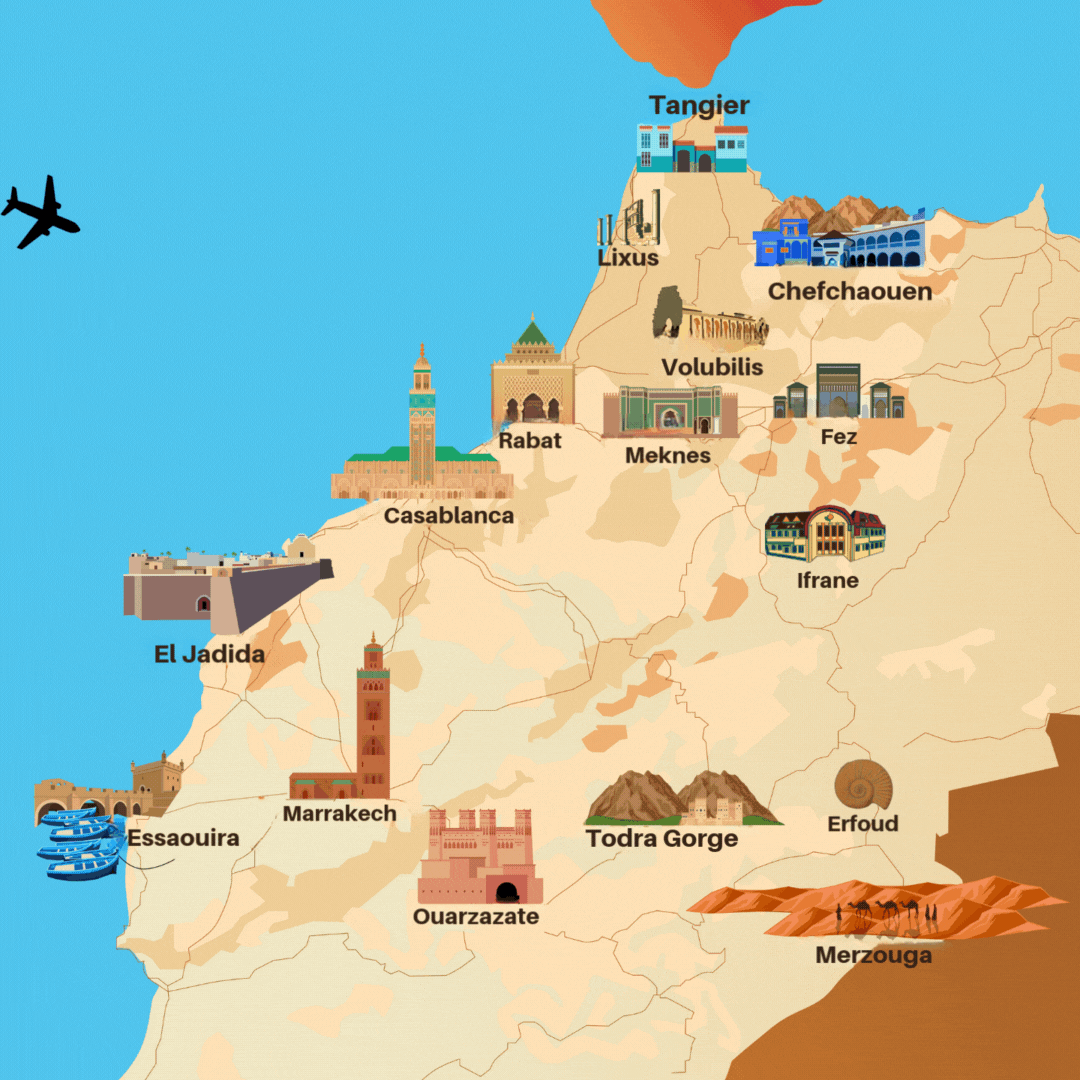
Ghost Tour of Fez
Uncover the Secrets of Fez: A Journey Through Time’s Darkest Corners
Step into a world where fourteen centuries of history whisper through ancient stones. Where every shadow holds a story, and every alley guards its secrets. Welcome to Fez after dark – a city whose true tales are more spellbinding than any legend.
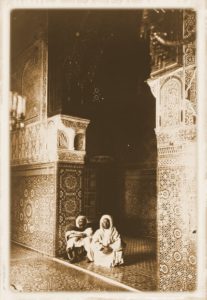 A City of Hidden Tales
A City of Hidden Tales
Fez stands as one of the world’s greatest labyrinth cities, its medieval walls harboring stories that have remained untold… until now. While traditional tours showcase the gleaming surfaces of this imperial city, SaharaTrek invites you to venture deeper, into the mysterious heart of Morocco’s cultural capital.
Exclusive Access: The Ghost Tour of Fez
For the first time in Morocco’s history, we pull back the veil on Fez’s most compelling mysteries. As twilight embraces the ancient medina, you’ll embark on an unprecedented journey through time, accessing spaces and stories that conventional tours dare not touch.
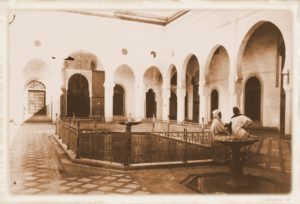
The Haunting Beauty of the Glaoui Palace
Your journey begins in the golden light of dusk at the legendary Glaoui Palace. Once a sprawling symbol of power encompassing twelve residences, hammams, Qur’anic schools, and vast gardens, this abandoned complex tells a tale of ambition, betrayal, and fate. Walk through halls where the notorious Glaoui family once plotted their rise to power – and their eventual fall from grace.
A Symphony of Shadows
As the sun sets behind the hills of Fez, witness a supernatural spectacle as the call to prayer rises from a hundred minarets, echoing across the ancient cityscape. This ethereal moment marks your descent into the medina’s depths, where narrow alleyways hold centuries of secrets.
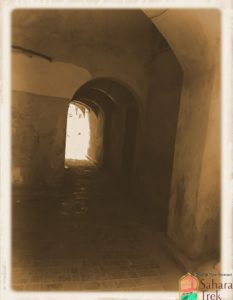
The Market of Lost Souls
Your journey culminates at the historic Slave Market – a place where the weight of history hangs heavy in the air. Though its days as a hub of human trafficking ended in 1925, visitors report haunting echoes of the past. Where animal hides and used clothes are now traded by day, the night air still trembles with whispered memories of those who passed through these ancient stones.
An Intimate Experience
This exclusive two-hour journey through Fez’s shadowy past is limited to our private tours, ensuring an intimate encounter with history. As darkness descends, your expert guide will lead you safely back to your riad, leaving you with stories few travelers have ever heard.

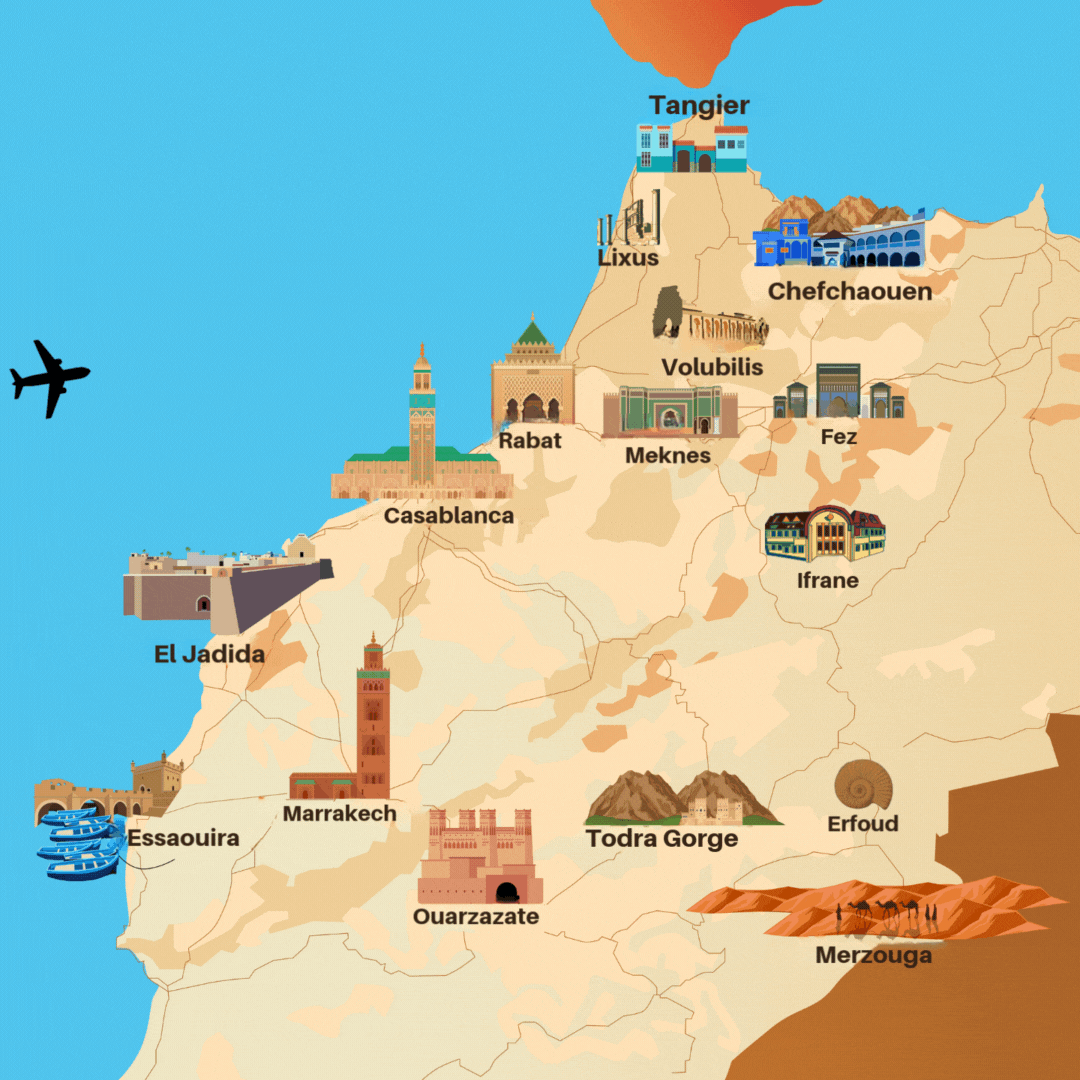
Guided Walking Tours
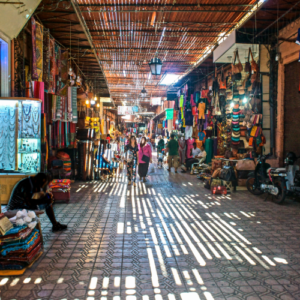 Are you ready to embark on an unforgettable journey through the vibrant cities of Morocco? All SaharaTrek tours include guided walking tours of Morocco’s most famous and historical cities, so you experience the country like never before. Immerse yourself in Morocco’s rich culture, history, and beauty as you explore its bustling streets, hidden gems, and iconic landmarks on foot.
Are you ready to embark on an unforgettable journey through the vibrant cities of Morocco? All SaharaTrek tours include guided walking tours of Morocco’s most famous and historical cities, so you experience the country like never before. Immerse yourself in Morocco’s rich culture, history, and beauty as you explore its bustling streets, hidden gems, and iconic landmarks on foot.
Our walking tours give you the unique opportunity to truly connect with the local communities, interact with friendly locals, and witness their daily way of life up close. Feel the city’s rhythm as you stroll through the colorful markets, savor the tantalizing aromas while sampling traditional cuisine, and marvel at the stunning architecture that tells the story of centuries past.
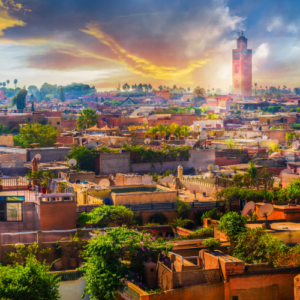 Unlike other ways of seeing the cities, walking allows you to discover the hidden corners and narrow alleyways inaccessible to larger vehicles. You’ll stumble upon charming riads, tranquil gardens, and secret courtyards that hold the secrets of Morocco’s enchanting past.
Unlike other ways of seeing the cities, walking allows you to discover the hidden corners and narrow alleyways inaccessible to larger vehicles. You’ll stumble upon charming riads, tranquil gardens, and secret courtyards that hold the secrets of Morocco’s enchanting past.
Our expert guides will lead you through the labyrinthine medinas, sharing fascinating stories and historical insights along the way. They’ll take you off the beaten path, introducing you to local artisans, craftsmen, and storytellers who will enrich your understanding of Moroccan culture.
The best part? You’ll have the freedom to pause, take photos, and explore each city at your own pace while you soak in the ambiance. You’ll get all the sights and sounds without feeling rushed or overwhelmed. And with a knowledgeable guide by your side, you’ll have a safe and enjoyable experience that you won’t soon forget.
Walking also provides a more sustainable and eco-friendly way to explore the cities, reducing your carbon footprint while immersing yourself in the authentic atmosphere of Morocco.
So, if you’re seeking an immersive adventure that goes beyond the surface, lace-up your walking shoes and discover the heart and soul of this captivating country, one step at a time.


Hassan II Mosque
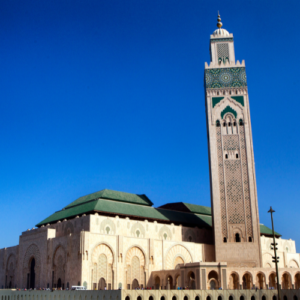 The Hassan II Mosque is the largest functioning mosque in Africa and the seventh largest in the world. It is a stunning example of Moorish architecture, with its intricate zellige tilework, carved cedar ceilings, and soaring minaret. The mosque is located on a promontory overlooking the Atlantic Ocean, and its location makes it even more impressive.
The Hassan II Mosque is the largest functioning mosque in Africa and the seventh largest in the world. It is a stunning example of Moorish architecture, with its intricate zellige tilework, carved cedar ceilings, and soaring minaret. The mosque is located on a promontory overlooking the Atlantic Ocean, and its location makes it even more impressive.
As part of a SaharaTrek tour, you can visit the Hassan II Mosque and learn about its history and significance. You will also have the opportunity to explore the interior of the mosque, which is open to non-Muslims. Our tour guides will ensure that you have a respectful and informative visit.
Here are some of the things you can expect during your visit to the Hassan II Mosque:
- Be dazzled by the mosque’s exterior, with its white marble walls and towering minaret.
- Marvel at the intricate zellige tilework in the interior, which is made up of millions of pieces of colored tile.
- Stand in the prayer hall, which can accommodate up to 25,000 worshippers.
- Take in the views of the Atlantic Ocean from the mosque’s terrace.
- Learn about the history of the mosque and its significance in Moroccan culture.
A visit to the Hassan II Mosque is a truly unforgettable experience. It is a must-see for anyone interested in Islamic architecture or Moroccan culture.
Here are some tips for visiting the Hassan II Mosque:
- The mosque is open to non-Muslims, but you will need to be respectful of Islamic customs.
- Be sure to dress modestly.
- Remove your shoes before entering the mosque.
- Tours are available in a variety of languages.
- The mosque is busiest during prayer times, so it is best to visit outside of these times.


Jemaa el-Fnaa Square
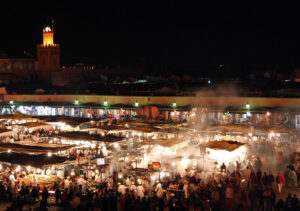
The first thing that strikes you is the wall of sound. Before your eyes can make sense of the chaos, before the aromas of saffron and mint and grilled meat reach your nose, it’s the symphony of Jemaa el-Fnaa that pulls you in. The square thrums with the heartbeat of a thousand stories being told at once – the hypnotic pipes of snake charmers weaving through percussion rhythms, the singsong calls of food vendors, and the constant murmur of ten thousand conversations in Arabic, French, English, and a dozen other tongues.
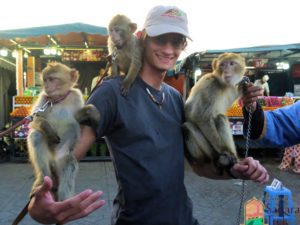 You quickly learn the dance of the square – the subtle sidestep, the polite but firm “La, shukran” (No, thank you) that becomes your mantra. Restaurant touts emerge from their stalls with the speed of striking cobras, reaching for your sleeve with surprising strength, trying to guide you forcefully toward their numbered tables. “My friend, my friend, where are you from? Just look at my menu!” They compete with near-desperate energy, sometimes literally pulling tourists into their domains. The seasoned visitors, you notice, walk with purpose, avoiding eye contact with the most aggressive sellers, staying to the center of the walkways where grasping hands can’t easily reach.
You quickly learn the dance of the square – the subtle sidestep, the polite but firm “La, shukran” (No, thank you) that becomes your mantra. Restaurant touts emerge from their stalls with the speed of striking cobras, reaching for your sleeve with surprising strength, trying to guide you forcefully toward their numbered tables. “My friend, my friend, where are you from? Just look at my menu!” They compete with near-desperate energy, sometimes literally pulling tourists into their domains. The seasoned visitors, you notice, walk with purpose, avoiding eye contact with the most aggressive sellers, staying to the center of the walkways where grasping hands can’t easily reach.
As sunset approaches, the ancient square sheds its drowsy afternoon skin. The shadows of the Koutoubia Mosque stretch across the plaza like sundial hands, marking time as they have for centuries. Food stalls materialize as if conjured by magic, their owners orchestrating a dance of metal carts and wooden tables that’s been choreographed through generations. Smoke begins to rise in thin columns, carrying the promise of the feast to come.
The square has its own geography, its own unwritten laws. Here, a cluster of orange juice carts creates a citrus archipelago, their vendors competing with good-natured showmanship as they stack fruit into precise pyramids. There, water sellers in broad-brimmed hats pose for photos, their brass cups tinkling like bells. The
As darkness falls, the real transformation begins. The square ignites with a thousand lanterns, each stall becoming its own island of light. Steam rises from bubbling pots of snail soup, and the aroma of cumin-spiced merguez sausages mingles with sweet shisha smoke. Rows of food stalls become impromptu restaurants, their numbered banners fluttering like battle standards. The selling grows more intense with the darkness – hands reach out from shops, voices call from every direction. Yet those who know the square’s rhythms handle it with grace: a smile and a firm “La, shukran” while walking steadily on, hands clasped in front, belonging neither to the tourist crowds that attract the most aggressive attention nor to the uncertain stragglers who become easy targets.
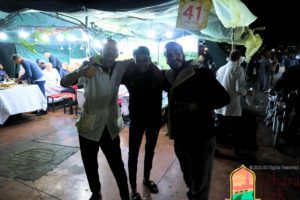 Between the stalls, life flows like water. Berber drummers create circles of rhythm that draw in dancers from the crowd. Henna artists call out to passing women, their pattern books open to display intricate designs. Young men play cards in the spaces between the chaos, as unperturbed as if they were in their own living rooms. Above it all, swallows dart through the deepening blue of the evening sky, riding the thermal currents rising from the warm stones.
Between the stalls, life flows like water. Berber drummers create circles of rhythm that draw in dancers from the crowd. Henna artists call out to passing women, their pattern books open to display intricate designs. Young men play cards in the spaces between the chaos, as unperturbed as if they were in their own living rooms. Above it all, swallows dart through the deepening blue of the evening sky, riding the thermal currents rising from the warm stones.
This is more than a market square – it’s a living theater where every visitor becomes part of the performance. Once you learn its ways – walking confidently, avoiding the touristy outer edges, speaking a few words of Arabic, dressing modestly to blend in – you find the real magic. The fruit seller who gives you a free orange, the apprentice cook who proudly explains his grandfather’s recipe, the old man who sits silently watching it all from his decades-old perch – each plays their part in this nightly ritual that’s been unfolding here since the eleventh century.
As midnight approaches, the energy gradually shifts. Some stalls begin to pack away, while others are just hitting their stride. The crowds thin but never quite disappear – this is a place that never truly sleeps. The sweet mint tea still flows, the storytellers find fresh audiences, and somewhere, always, a drum keeps beating. The persistent sellers finally tire, their calls growing hoarse, leaving the square to those who truly know its soul.
To stand in Jemaa el-Fnaa is to feel the pulse of Morocco itself. It’s a place where time feels fluid, where the medieval and the modern dance together under the North African stars. Every night, the square writes a new chapter in its endless story, and every visitor becomes a part of its living history, their own tales now woven into the tapestry of this remarkable place. The key is to approach it with respect, confidence, and knowledge – then the square reveals its true character, beyond the forceful commerce of its outer edges, in the authentic heart that beats beneath.

Ksar el Khorbat
Ksar el Khorbat Museum is located in the south of the Atlas Mountains. Originally built in the 17th century as a fortress to protect the surrounding area from invaders. Over time, it became a center of trade and commerce and was eventually transformed into a kasbah museum.
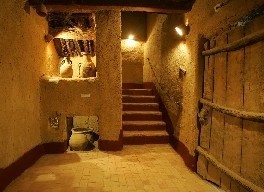 Today, the Kasbah Museum is a fascinating place to visit, filled with artifacts and exhibits that tell the story of the people who lived there. You’ll have the chance to see everything from traditional Berber clothing and jewelry to weapons and tools used by the local tribes.
Today, the Kasbah Museum is a fascinating place to visit, filled with artifacts and exhibits that tell the story of the people who lived there. You’ll have the chance to see everything from traditional Berber clothing and jewelry to weapons and tools used by the local tribes.
In addition to the museum, the restaurant offers traditional camel meat dishes that are as delicious as they are authentic.
Visiting Ksar el Khorbat Kasbah Museum is a truly unique and unforgettable experience. Its fascinating history, stunning architecture, and rich cultural heritage will leave a lasting impression on anyone who visits.

Self-Guided Adventure
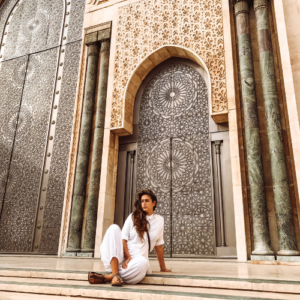 SaharaTrek offers a unique opportunity for travelers to experience Morocco’s vibrant culture and history beyond the tour. Our guided tours provide you with a comprehensive exploration of the country’s most iconic sites, including the bustling marketplaces, ancient ruins, and breathtaking landscapes. But we also understand that sometimes, you want to explore on your own, without the constraints of a guided tour. That’s why we offer free time after our guided tours, ensuring that you have the flexibility to explore the cities and discover their hidden gems.
SaharaTrek offers a unique opportunity for travelers to experience Morocco’s vibrant culture and history beyond the tour. Our guided tours provide you with a comprehensive exploration of the country’s most iconic sites, including the bustling marketplaces, ancient ruins, and breathtaking landscapes. But we also understand that sometimes, you want to explore on your own, without the constraints of a guided tour. That’s why we offer free time after our guided tours, ensuring that you have the flexibility to explore the cities and discover their hidden gems.
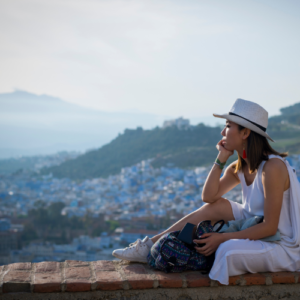 With free time on your hands, you can take advantage of the many attractions in the city, such as the bustling markets, historical sites, gardens, and charming cafes that aren’t covered during the tour. You can also dine at local restaurants, shop for souvenirs, or simply wander through the streets and soak up the vibrant energy of the city. With SaharaTrek, you can enjoy the best of both worlds – a guided tour that provides a comprehensive overview of the country’s highlights and free time to explore on your own, allowing you to truly experience the culture and spirit of Morocco.
With free time on your hands, you can take advantage of the many attractions in the city, such as the bustling markets, historical sites, gardens, and charming cafes that aren’t covered during the tour. You can also dine at local restaurants, shop for souvenirs, or simply wander through the streets and soak up the vibrant energy of the city. With SaharaTrek, you can enjoy the best of both worlds – a guided tour that provides a comprehensive overview of the country’s highlights and free time to explore on your own, allowing you to truly experience the culture and spirit of Morocco.


Shopping
Discover Morocco’s vibrant and exotic shopping world, where centuries-old traditions meet contemporary trends. Morocco offers a unique and unforgettable shopping experience for travelers with its bustling markets, artisanal craftsmanship, and a kaleidoscope of colors and scents.
Medina Souks: A Shopper’s Paradise
 Explore the enchanting medinas (old city centers) of Marrakech, Fez, and Essaouira, where you’ll find labyrinthine alleys filled with a treasure trove of goods.
Explore the enchanting medinas (old city centers) of Marrakech, Fez, and Essaouira, where you’ll find labyrinthine alleys filled with a treasure trove of goods.- Discover handmade rugs, intricate ceramics, dazzling lamps, and intricately designed textiles.
- Bargain to your heart’s content and immerse yourself in the lively atmosphere of these ancient marketplaces.
Traditional Souvenirs: Moroccan Keepsakes
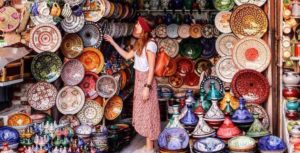 Bring home a piece of Morocco with traditional souvenirs like ornate tea sets, decorative tagines, and beautiful mosaic works.
Bring home a piece of Morocco with traditional souvenirs like ornate tea sets, decorative tagines, and beautiful mosaic works.- Handcrafted leather goods such as bags, belts, and shoes are also popular choices.
- Don’t forget to pick up some argan oil, known for its nourishing properties and unique to Morocco.
The Art of Haggling: Bargaining Tips
- Haggling is a cultural norm in Morocco, so embrace it with a smile and negotiate for the best prices.
- Be friendly and respectful during negotiations, and don’t be afraid to walk away if a deal doesn’t feel right.
- There are four steps to successful Moroccan negotiating:
- First Price: That’s the price you’ll be given with a smile. It’s more of a suggestion (or wishful thinking) for the shopkeeper.
- First Offer: Knowing how much you want to pay is essential. A good way to educate yourself is to stop by the Centre Artisanal (a government-run, no-haggle shopping plaza). The prices and quality are the price to beat, so make your first offer lower than what you’ve seen there.
- The Yelling Phase: The shopkeeper will become outraged at the price you’ve offered and begin to toute the quality of the products and how he won’t make any money at the price you offered and will make a counteroffer.
- Make or Break: As the asking price decreases, the offering price increases (but not past what you want to spend). At this point, you’d better be sure you want that item at the price you say because if the shopkeeper agrees, then you MUST pay the price you offered (it’s offensive not to).
- During serious big-ticket haggling, you’ll be offered mint tea from the shopkeepers, a gesture of goodwill during negotiations and a way to keep you longer. There’s a joke: every glass of tea adds $10 to the purchase price.
Fashion and Jewelry: Moroccan Elegance
- A
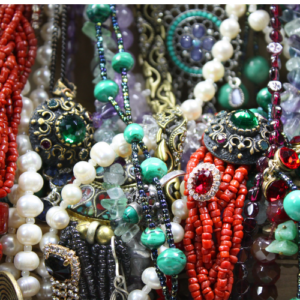 dmire the craftsmanship of Berber and Tuareg jewelry, often adorned with semi-precious stones and intricate silverwork.
dmire the craftsmanship of Berber and Tuareg jewelry, often adorned with semi-precious stones and intricate silverwork. - Don’t miss the vibrant kaftans, jalabiyas, and djellabas, traditional Moroccan garments with modern twists.
Artisan Workshops: A Glimpse into Craftsmanship
- On our guided tours, you’ll visit artisan workshops and witness the skillful creation of Moroccan goods.
- Learn about the art of pottery, weaving, metalwork, and woodworking from skilled craftsmen.
- Purchase one-of-a-kind pieces directly from the artisans.
Markets by Region: Diversity in Shopping
- Explore the uniqueness of each region’s markets, from thuya wood and argon oil in Essaouira to hand-tanned leather in Fez.
- Discover regional specialties, like hand-painted ceramics in Safi or carpets in the Middle Atlas region.
Shopping in Morocco is an adventure in itself, where you can immerse yourself in this enchanting country’s rich culture, artistry, and history. Morocco offers a shopping experience that will leave you with not just souvenirs but lasting memories of a unique and diverse culture.

Spas & Riads
SaharaTrek offers a wide range of tours and activities to help you explore the best of this beautiful country. We understand that your accommodation is an important part of your trip, and we only partner with the best riads and hotels in Morocco.
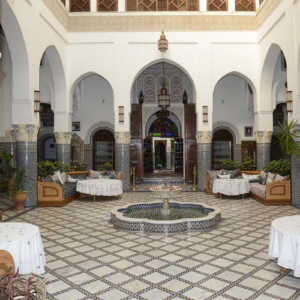 A riad is a traditional Moroccan house or palace with an interior garden or courtyard. Riads are typically located in the medina, or old city, of Moroccan cities. They are known for their beautiful architecture, intricate zellige tilework, and relaxing atmosphere. Riads offer a unique and authentic Moroccan experience.
A riad is a traditional Moroccan house or palace with an interior garden or courtyard. Riads are typically located in the medina, or old city, of Moroccan cities. They are known for their beautiful architecture, intricate zellige tilework, and relaxing atmosphere. Riads offer a unique and authentic Moroccan experience.
In addition, many of our riads offer an optional luxury hammam (spa) experience because they know that their guests will appreciate the benefits of this traditional Moroccan experience. Hammams are a great way to relax and rejuvenate after a long day of sightseeing or exploring. They are also a great way to connect with Moroccan culture and tradition.


Taste of Morocco
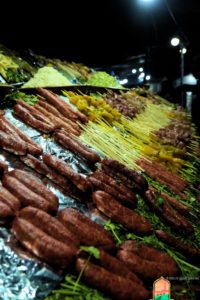 Here’s a joke: What do Moroccans call traditional Moroccan food? Answer: Food! And traditional Moroccan food is everywhere you go, surrounding you with the smells and tastes of the exotic. With our Taste of Morocco, you’ll experience the adventure that is Moroccan street food. In Marrakech and Fez, your tour guide will not only show you the sites of Moroccan culture and history, feeding your curiosity and desire for adventure. But also stop by the small shops and workingman’s cafes where you’ll get to sample the local delicacies feeding your stomach simultaneously. Think of it as a city-wide roving buffet that can easily replace a sit-down lunch.
Here’s a joke: What do Moroccans call traditional Moroccan food? Answer: Food! And traditional Moroccan food is everywhere you go, surrounding you with the smells and tastes of the exotic. With our Taste of Morocco, you’ll experience the adventure that is Moroccan street food. In Marrakech and Fez, your tour guide will not only show you the sites of Moroccan culture and history, feeding your curiosity and desire for adventure. But also stop by the small shops and workingman’s cafes where you’ll get to sample the local delicacies feeding your stomach simultaneously. Think of it as a city-wide roving buffet that can easily replace a sit-down lunch.
As you tour the cities, keep your eyes (and noses) on the lookout for some of the specialties Morocco offers, and you’ll regret missing them.
- Shebbakia: pasta ribbons with hot honey and grilled sesame seeds, commonly found during Ramadan.
- Briouats: sweet filo pastry with a savory filling, like a miniature pasilla.
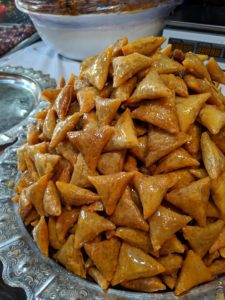 Briouats au miel: sweet filo pastry envelopes filled with nuts and honey.
Briouats au miel: sweet filo pastry envelopes filled with nuts and honey.- M’hencha: almond-filled pastry coils, often covered in honey or syrup.
- Cornes de gazelle: marzipan-filled, banana-shaped pastry horns.
- Pastilla: sweet pigeon or chicken pie with cinnamon and filo pastry (a specialty of Fes).
- M’laoui: flat griddle bread from dough sprinkled with oil, rolled out, and folded several times.
- Bissara: thick beans soup, usually served with olive oil and cumin.
- Olives: come in numerous varieties,
- Almonds, walnuts, and dates.
- Bread: almost always round like a cake and tears easily by hand. It’s usually homemade and cooked in the public oven.
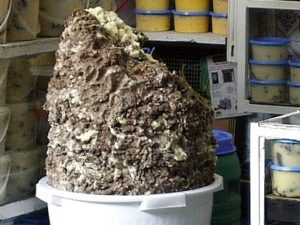 Khlea: small pieces of beef or lamb marinated in light spices, then dried in the sun (gueddid) before being cooked and preserved in fat for up to 2 years. Still a homemade staple in rural areas, these days, many Moroccan families resort to buying it as it is so readily available everywhere.
Khlea: small pieces of beef or lamb marinated in light spices, then dried in the sun (gueddid) before being cooked and preserved in fat for up to 2 years. Still a homemade staple in rural areas, these days, many Moroccan families resort to buying it as it is so readily available everywhere.


Todra Gorge Hike
Enjoy an adventure-filled 3-hour hike along the stunning Todra Gorge!
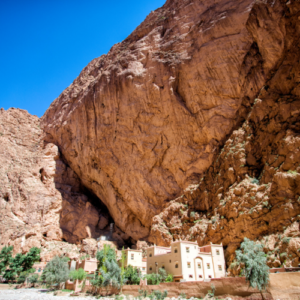 Nestled in the heart of the High Atlas Mountains, the Todra Gorge is a must-see destination for anyone who loves nature and outdoor activities. With towering rock walls that reach over 300 meters high, this gorge is a sight to behold.
Nestled in the heart of the High Atlas Mountains, the Todra Gorge is a must-see destination for anyone who loves nature and outdoor activities. With towering rock walls that reach over 300 meters high, this gorge is a sight to behold.
On our 3-hour hike (included with the cost of your tour), you’ll get to explore the beauty of the Todra Gorge up close. Our experienced guides will lead you on a scenic trail that winds through the gorge, offering breathtaking views of the surrounding mountains and valleys. Along the way, you’ll have plenty of opportunities to stop and take photos and learn about the local flora and fauna.
At SaharaTrek, we pride ourselves on providing safe and enjoyable experiences for all. Whether you’re a seasoned hiker or just starting out, we guarantee that you’ll have a great time exploring the Todra Gorge with us. If hiking is too strenuous, donkeys are available at an extra charge to make the adventure accessible to all.

